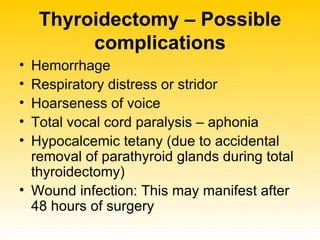A male client with acute kidney injury (AKI) is scheduled for his first hemodialysis treatment and asks the practical nurse (PN) how the treatments will be evaluated for effectiveness. The PN explains that blood samples will be collected for analysis. Which laboratory value should the PN explain as the best indicator of each hemodialysis?
Elevated potassium.
Decreased calcium.
Lowered hemoglobin.
Decreased creatinine.
The Correct Answer is D
Hemodialysis is a procedure used to remove waste products and excess fluid from the blood when the kidneys are unable to function properly. One of the waste products that accumulate in the blood during kidney dysfunction is creatinine. Creatinine is a byproduct of muscle metabolism, and its levels in the blood are normally regulated and eliminated by the kidneys. In AKI, the kidneys are not able to effectively filter and eliminate creatinine, leading to elevated levels in the blood. Hemodialysis helps to remove excess creatinine from the blood, resulting in decreased creatinine levels.

A- Elevated potassium levels (hyperkalemia) are common in AKI and can be life-threatening. Hemodialysis helps to remove excess potassium from the blood, restoring normal levels.
However, the best indicator of the effectiveness of hemodialysis in managing hyperkalemia would be monitoring the potassium levels before and after the session rather than considering it as the "best" indicator.
B- Decreased calcium levels can occur in kidney dysfunction due to impaired activation of vitamin D and decreased absorption of calcium from the intestines. While hemodialysis can help restore calcium levels, it may not be the primary laboratory value used to evaluate the effectiveness of each session.
C- Lowered hemoglobin levels can be seen in AKI due to various factors, including decreased production of red blood cells and blood loss. Hemodialysis can help remove waste products and excess fluid, but it may not directly address the underlying causes of lowered hemoglobin levels.
Nursing Test Bank
Naxlex Comprehensive Predictor Exams
Related Questions
Correct Answer is A
Explanation
Hoarseness or voice changes after thyroidectomy can be indicative of injury or irritation to the recurrent laryngeal nerve, which is responsible for controlling the vocal cords. This is a potential complication of the surgery and should be reported to the charge nurse or healthcare provider for further evaluation and management.

B. Administer humidified oxygen per nasal cannula: This option is not appropriate for addressing hoarseness in a client following a thyroidectomy. Hoarseness after a thyroidectomy is typically related to vocal cord injury or irritation, and providing humidified oxygen would not directly address this issue. It is important to notify the charge nurse or healthcare provider for further evaluation and management.
C. Obtain a cup of ice chips for the client: Providing ice chips is not the appropriate action for hoarseness following a thyroidectomy. Ice chips are typically used to provide hydration and comfort to clients, but they do not directly address the underlying cause of hoarseness, which in this case may be vocal cord injury or irritation. It is important to notify the charge nurse or healthcare provider for appropriate evaluation and management.
D. Ensure that the drainage device is compressed: While ensuring proper compression of a drainage device is important for preventing complications such as bleeding or infection, it is not directly related to the client's hoarseness. Hoarseness after a thyroidectomy is more likely related to vocal cord injury or irritation, and notifying the charge nurse or healthcare provider is necessary for further assessment and management.
Correct Answer is B
Explanation
A. Asking the client if she has previously been catheterized is important for understanding her history and comfort level but is not the first action to take in preparation for the procedure.
B. Consulting with the charge nurse about the catheter may be appropriate if there are concerns about the catheter type, but it is not a priority before starting the procedure.
C. Obtaining a 30 mL syringe and a vial of sterile water is essential for inflating the balloon after catheter insertion, but this can be done after positioning the client.
D. Positioning the client and observing the urinary meatus is the first action the PN should take. This step ensures the client is comfortable and provides a clear view for proper catheter insertion, which is crucial for the procedure's success.
Whether you are a student looking to ace your exams or a practicing nurse seeking to enhance your expertise , our nursing education contents will empower you with the confidence and competence to make a difference in the lives of patients and become a respected leader in the healthcare field.
Visit Naxlex, invest in your future and unlock endless possibilities with our unparalleled nursing education contents today
Report Wrong Answer on the Current Question
Do you disagree with the answer? If yes, what is your expected answer? Explain.
Kindly be descriptive with the issue you are facing.
